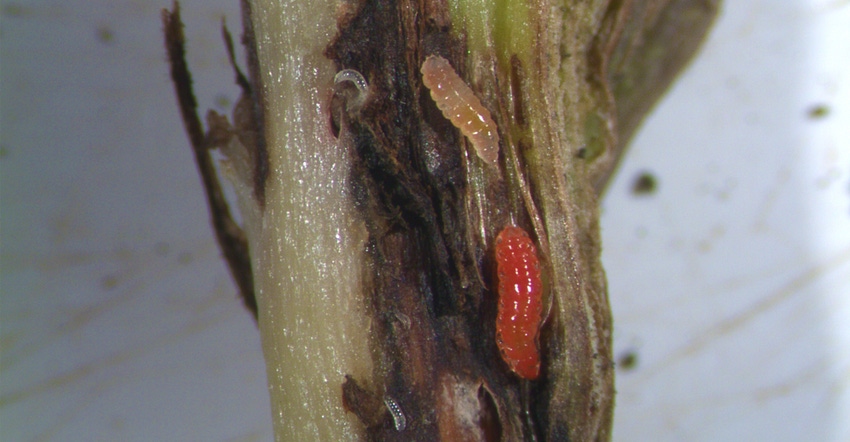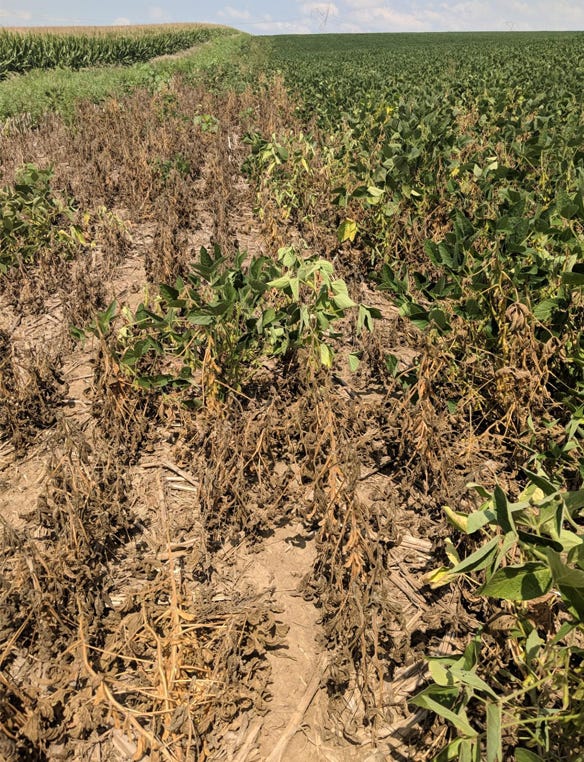January 23, 2019

By Aaron Saeugling
With the 2018 harvest still fresh in everyone’s minds, it’s a good time to look at how to overcome last year’s challenges. Last season will be one of those years farmers will not soon forget.
There were several challenges not only with low commodity prices, but with Mother Nature, as well. And there is something always hiding in the closet. For some farmers in western Iowa, eastern Nebraska and eastern South Dakota that would be soybean gall midge.
Soybean gall midge was first detected in Nebraska in 2011, and then wasn’t reported again until 2015 in South Dakota. The first fields involved had limited hail injury. Early indications were that soybean gall midge only attacked previously injured soybeans; this later proved to be false. More isolated reports would begin to surface in 2016 and 2017.
Last June and July, numerous reports across western Iowa, eastern Nebraska, Minnesota and eastern South Dakota became more common. The injury caused from soybean gall midge is similar to plant diseases like stem canker, brown spot, charcoal rot, cercospora leaf blight, and pod and stem blight.
Difficult pest to control
When agronomists and farmers began to look closer under the surface of the plant, the culprit was quickly found. The distinguishing feature with gall midge injury is the presence of a large gall at the base of the plant, and the presence of larvae under the epidermis of the plant. These larvae in the early stages of life are clear and progress to a large size and turn a red to orange as they grow.

YIELD ROBBER: Damage from soybean gall midge is usually first seen at the field edges. (Photo by Justin McMechan)

Scouting is the only way to find this pest. Eventually the plants will die, so it’s not uncommon to see dead soybeans at the edges of infested fields. However, in the early stages, the infested plants look fine, although the larvae are inside having a free lunch. Another complication is soybean gall midge likely has more than one generation per year. The adult stage is a tiny fly that lays eggs on soybean plants. The eggs hatch into larvae, and the larvae enter the plant stem.
Still lots to learn
An understanding of the gall midge’s life cycle is needed before implementing control strategies. Soybean gall midge is a new species from the genus Resseliella. Currently, 15 species exist in this genus. However, soybean gall midge is new, and the name is Resseliella maxima. With this being a new species, we have a lot to learn about how to control soybean gall midge.
The life cycle of soybean gall midge is a complete metamorphosis (egg, larvae, pupa, adult). The adult midges are weak fliers and have black-and-white bands on long legs with hairy wings and long antennae.
Catching live adult soybean gall midges will be summer activity for Extension entomologists in 2019 as they study this pest. This will not be like the old days of watching Dad’s new bug zapper back when they were in style. Entomologists will need to raise adults, have them lay eggs, and begin the process of developing a growing-degree calendar to predict emergence before control measures can be successful on a large scale.
Options for control limited
Gall midge appears to have two to three generations per growing season. Most damage observed in 2018 was from June to August. With larvae causing soybean death and being inside the soybean stem, few control measures can be effective. Only one insecticide is labeled for suppression of gall midge.

INVADER: Gall midge larvae feed inside soybean plants. (Photo by Brent Bierbaum)

Fields in 2018 with insecticide treatment on the soybean seed were attacked and killed. Therefore, looking at concentrations of seed treatment and their potential benefits they can provide for activity on soybean gall midge is needed.
As with any new pest, farmers want answers on how to control damaging insects to soybeans and corn. Currently, the only cultural tool is crop rotation. Two years of corn between bean crops may be an option. Research is needed to find answers and develop effective management recommendations.
For more information on soybean gall midge, see Soybean gall midge: a new field crop pest.
Saeugling is the ISU Extension field agronomist covering southwest Iowa. Contact him at [email protected].
You May Also Like




